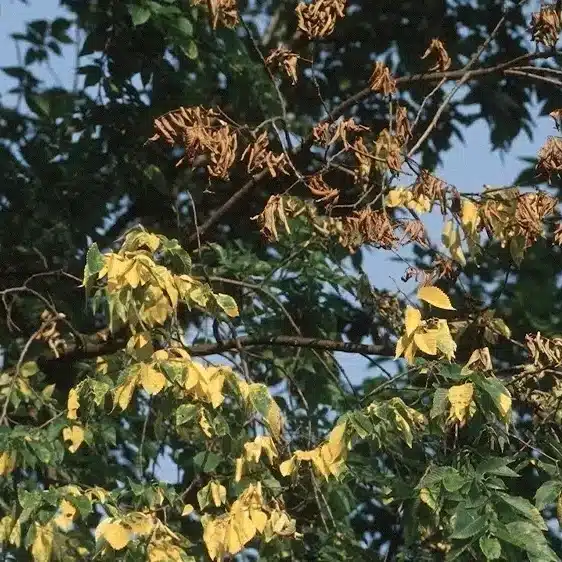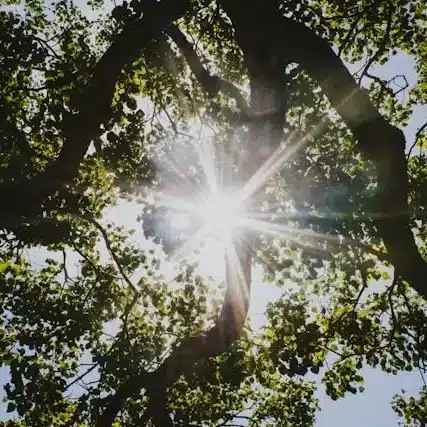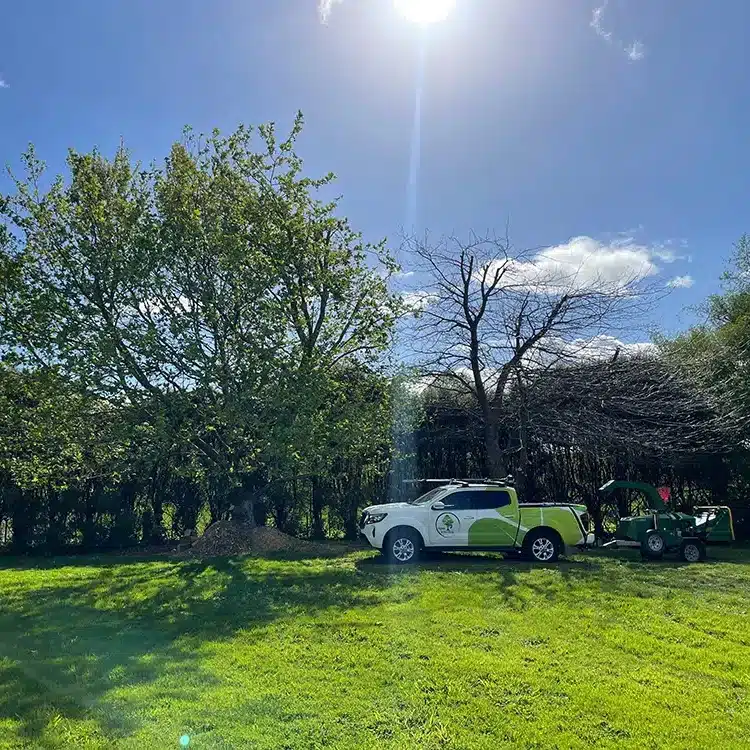
Mulch: the gardener’s best friend and the secret weapon for a healthier, more vibrant garden. At its core, mulching involves covering the soil surface around plants with a protective layer of material, whether organic, like compost, bark, and leaves, or inorganic, such as pebbles and landscape fabric. This simple yet transformative practice is far more than just an aesthetic choice; it’s a cornerstone of sustainable gardening. It offers many benefits, from moisture retention and weed suppression to temperature regulation and soil improvement.
Mulching is an important part of gardening, but what exactly is it and how can you use it to benefit your garden? Whether you’re an experienced gardener or just starting out, understanding the basics of mulching can help keep your garden healthy. This guide is designed to help you learn about mulch, including what it is, why it’s important, and how to use it. We’ll cover different types of mulch, how to use them, and the best practices for applying them. By the end of this guide, you’ll have the knowledge you need to use mulch effectively in your garden.
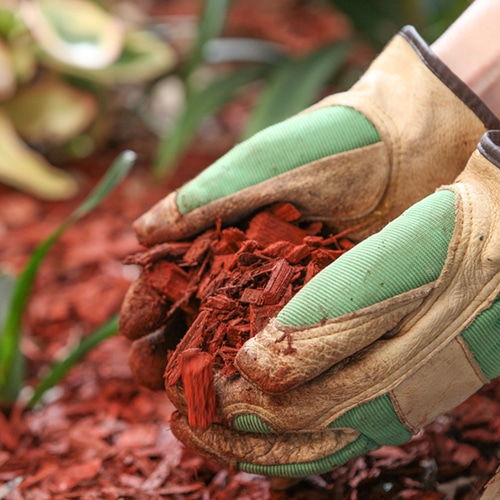
Understanding Mulch
Mulch is a layer of material applied to the soil surface. It’s a technique as old as agriculture itself, used not just for its aesthetic appeal but for many practical benefits crucial to gardening. Whether organic mulch, such as leaves, compost, and bark, or inorganic, like stones, rubber chips, and landscape fabric, the purpose of mulch is multifaceted: it conserves water, improves soil quality, reduces weed growth, and provides temperature insulation for the earth beneath.
The Purpose of Mulch in Gardening
In gardening, mulch serves several critical functions:
Moisture Conservation: By covering the soil, mulch reduces evaporation, keeping the soil moist for extended periods. Conserving moisture is vital during dry spells or in arid regions.
Regulating Soil Temperature: Mulch acts as insulation, keeping the soil cooler in summer and warmer in winter, which helps protect plant roots from extreme temperature changes.
Weed Suppression: A thick layer of mulch can prevent weeds from reaching the sunlight they need to grow, which reduces the need for manual weeding.
Soil Improvement: Organic mulches break down over time, adding valuable nutrients back into the soil and improving its structure, which is beneficial for plant health.
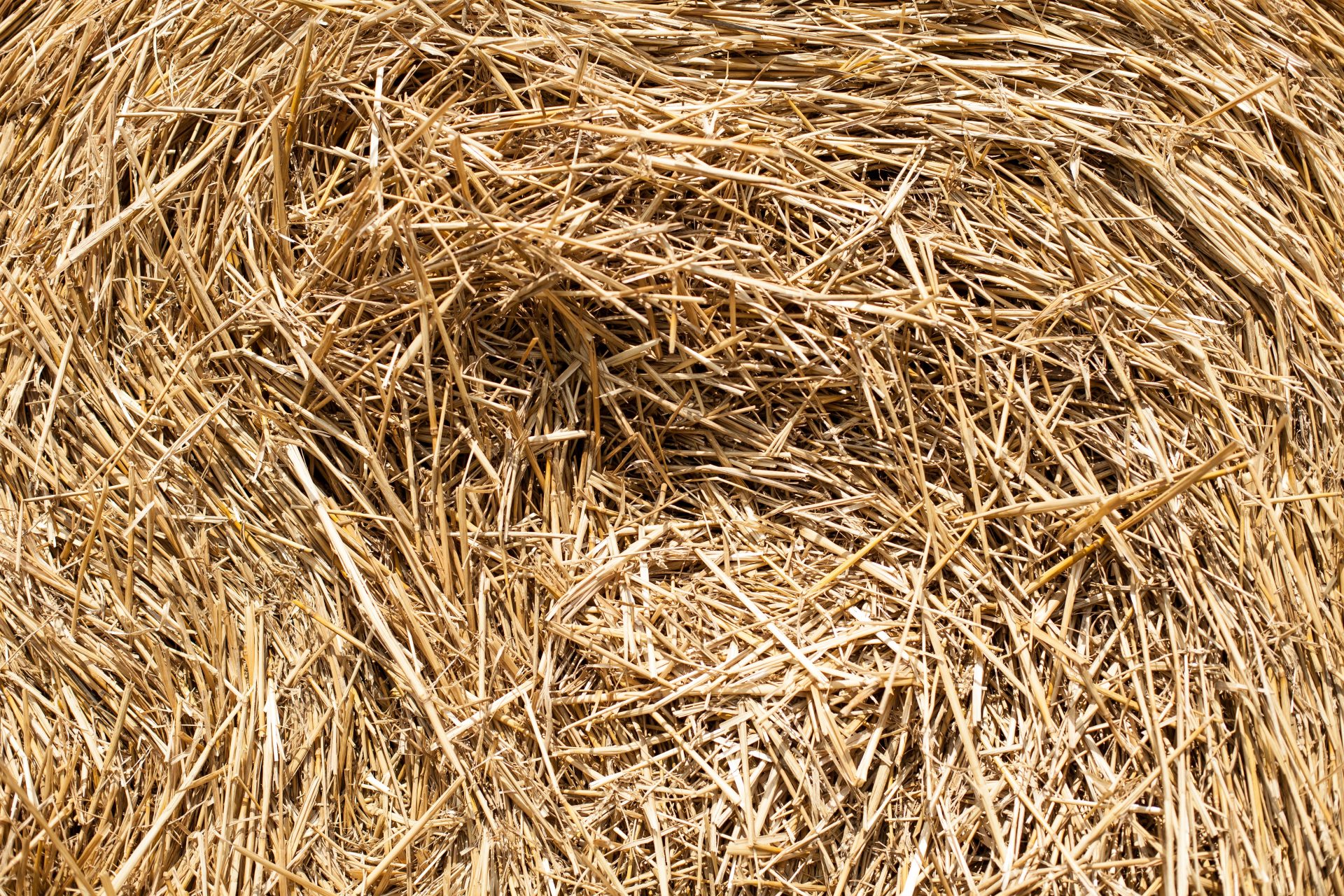
Environmental Benefits of Mulching
Beyond the garden, mulching offers significant environmental advantages:
Water Conservation: By reducing the need for frequent watering, mulching contributes to sustainable water use, an increasingly important consideration in global water scarcity.
Soil Health: Adding organic matter from mulch enriches the soil and fosters the development of a healthy soil microbiome, which is crucial for plant nutrition and soil structure.
Biodiversity: Mulched gardens provide habitats for various organisms, from beneficial insects and earthworms to microorganisms that play essential roles in the ecosystem. This biodiversity is critical to maintaining ecological balance and promoting a healthy environment and garden for life.
Carbon Sequestration: Organic mulches, as they decompose, in soils can store carbon in the soil, contributing to the mitigation of climate change by reducing the amount of carbon dioxide released into the atmosphere.
Types of Mulch Explained
Mulch is categorised into two types: organic and inorganic. Each type has unique characteristics, benefits, and best uses, depending on the garden’s specific needs and the gardener’s goals.
Organic Mulches
Compost: Decomposed organic matter, compost is rich in nutrients, making it an excellent choice for enriching soil fertility. It is best used in vegetable gardens and flower beds where soil health is a priority.
Bark: Available in various sizes, bark mulch is ideal for trees, shrubs, and perennials. It decomposes slowly, providing a long-lasting mulch layer that improves soil texture and adds organic matter as it breaks down.
Straw: Lightweight and inexpensive, straw mulch is best for vegetable gardens. It keeps the soil moist and cool, prevents weed growth, and adds organic matter as it decomposes. However, it may need frequent watering and replenishment.
Grass Clippings: Easily and readily available for most gardeners, grass clippings are a nitrogen-rich mulch option perfect for lawns and vegetable gardens. They decompose quickly, so they need to be reapplied often, but they can provide a quick nutrient boost.
Leaves: Shredded leaves can be an excellent mulch for almost any garden area. They encourage earthworm activity and improve soil structure as they decompose. They’re instrumental in woodland gardens and around trees and shrubs.
Coir: Made from coconut husks, coir mulch is an excellent soil conditioner and retains moisture well. Due to its exceptional water retention and aeration properties, it’s instrumental in sandy soils and container gardens.
Lucerne (Alfalfa): High in nitrogen and other nutrients, lucerne mulch is particularly beneficial for roses, herbs and vegetable gardens. It decomposes more quickly than bark or straw, enriching the soil with organic matter and promoting healthy plant growth.
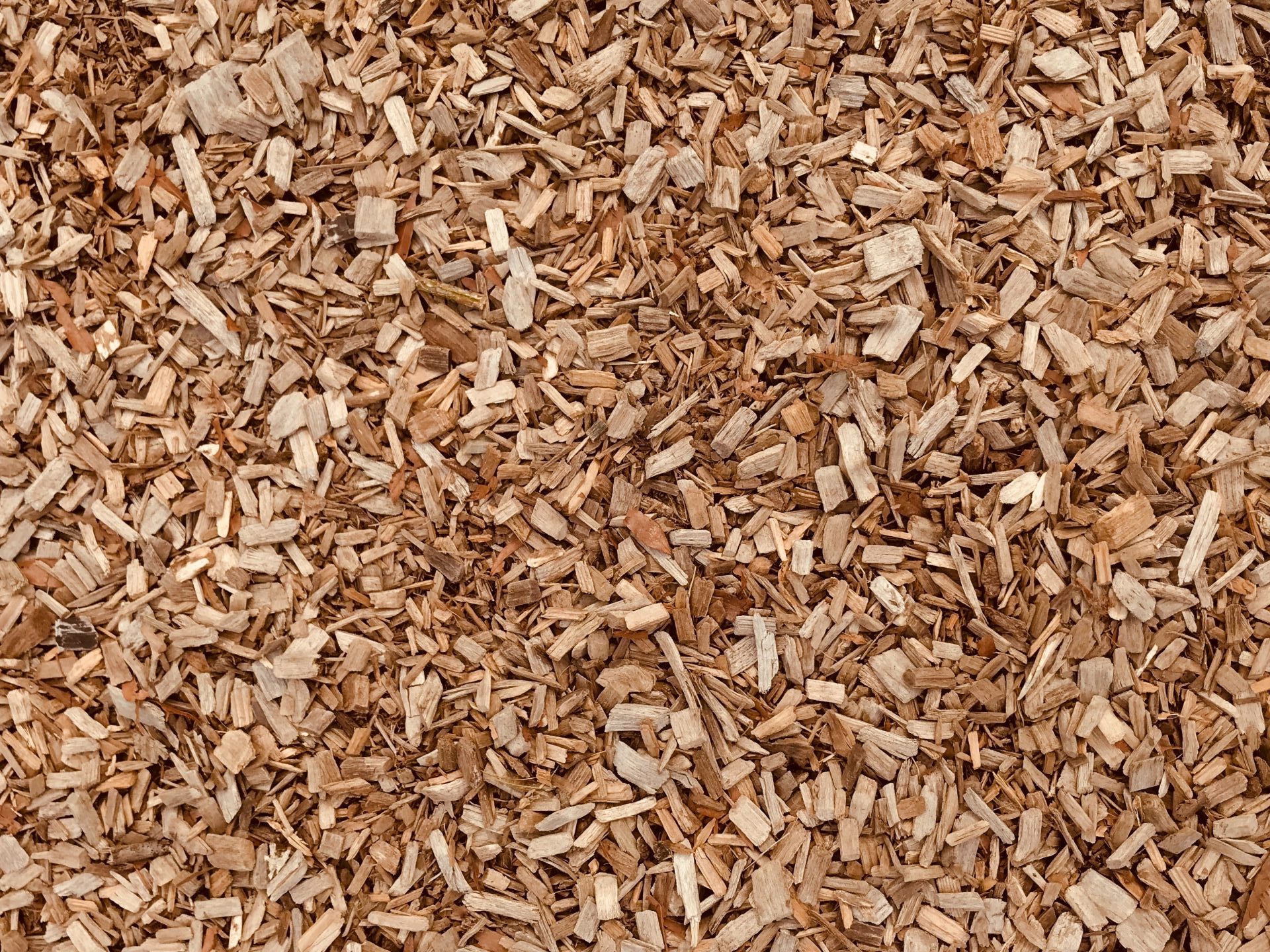
Inorganic Mulches
Inorganic mulches do not decompose, making them a more permanent solution, though they don’t improve soil structure or fertility.
Gravel and Pebbles are ideal for cactus and succulent gardens, paths, and driveways. They reflect heat to plants, which can benefit specific garden designs but may require additional irrigation in others.
Black Plastic and Landscape Fabric effectively make plants suppress weeds and retain soil moisture. These materials are best used in vegetable gardens, which can be covered with organic mulch to reduce heat absorption and improve appearance.
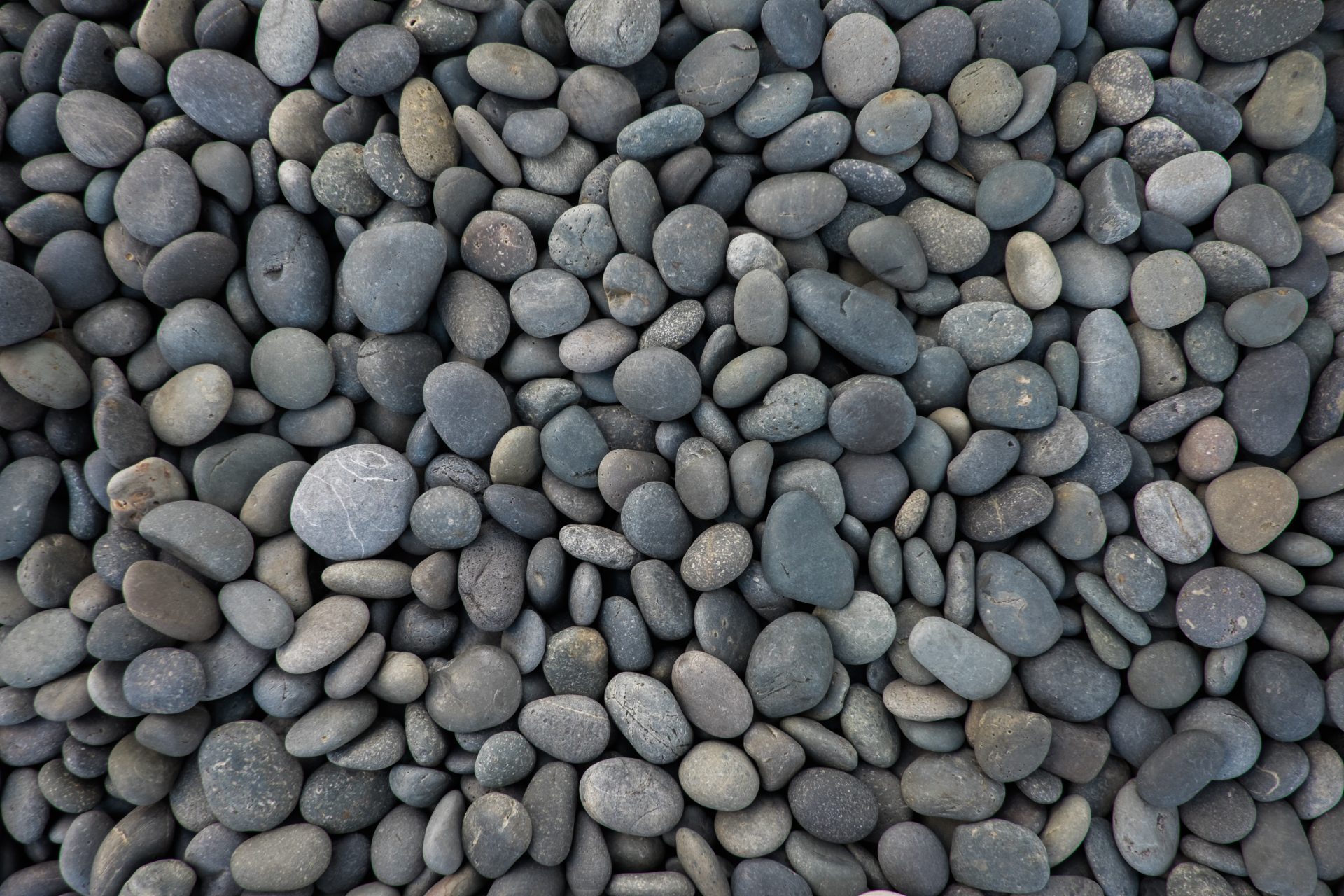
Comparative Analysis: Organic vs. Inorganic Mulch
Soil Health: Organic mulches improve soil fertility and structure as they decompose, while inorganic mulches do not. If improving soil health is a priority, organic is the way to go.
Durability: Inorganic mulches last longer, making them cost-effective for long-term landscaping projects. However, they may need to be refreshed for aesthetic reasons or to address displacement.
Water Dynamics: Organic mulches help retain soil moisture and distribute it evenly. Inorganic mulches, on the other hand, can sometimes lead to more water and runoff, especially on slopes, and may require additional irrigation management.
Weed Control: Both types suppress weeds, but organic mulches must be replenished regularly. Inorganic mulches, particularly landscape fabric, can be more effective against weeds over the long term but may require maintenance to remove soil or debris that accumulates on top.
Environmental Impact: Organic mulches contribute to the carbon cycle and support soil biodiversity. Depending on the material, inorganic mulches may have a higher ecological footprint due to their production and decomposition processes.
Recommendations
- Organic mulches are preferable for vegetable gardens where soil improvement is desired.
- Inorganic mulches may be more suitable in areas where long-term, low-maintenance landscaping is the goal, such as around permanent structures or paths.
- Using landscape fabric beneath a layer of organic mulch, a hybrid approach can combine the weed suppression benefits of inorganic materials with the soil health benefits of organic materials.
Choosing the right mulch depends on your garden’s specific needs, environmental priorities, and the aesthetic you want to achieve.
Mulching for Every Season
Seasonal Mulching Strategies
Spring: Apply organic mulch after the soil has warmed up to conserve moisture for the growing season and suppress weeds. This is the ideal time for mulching vegetable gardens and flower beds with compost or straw to benefit young plants.
Summer: Refresh mulch layers to enhance moisture retention and protect roots from heat. In areas with hot summers, light-coloured mulches can help reflect sunlight and keep the soil cool.
Autumn: Apply a thicker layer of mulch to insulate plant roots from the cold and wet and mitigate the impact of soil temperature fluctuations. This is also an excellent time to mulch with leaves, as they break down over winter and enrich the soil.
Winter: Ensure mulch is not too wet or thick around plant bases to prevent rot but thick enough to protect roots from freezing temperatures. Pine needles, straw or shredded bark, can be particularly effective during this season.
Advanced Mulching Techniques and Tips
Mulching is a pivotal garden practice that conserves moisture, suppresses weeds, and improves soil quality. However, the benefits of mulching can extend much further when advanced techniques and tips are applied thoughtfully across different areas of the garden and by avoiding common pitfalls. Here’s how to leverage these advanced mulching strategies.
Mulching for Different Garden Areas
Vegetable Gardens: Opt for organic mulches like compost, straw, or grass clippings. These materials suppress weeds, retain soil moisture, and enrich the soil as they decompose. At the season’s end, they can be turned into the soil, enhancing its structure and fertility for the next planting cycle.
Flower Beds: Utilise bark mulch or leaf mould to improve aesthetic appeal while conserving soil moisture and temperature. These materials break down slowly, enriching the soil and suppressing weed growth without frequent replenishment.
Trees and Shrubs: Apply wood chips or shredded bark in a donut shape around the base of trees and shrubs. This method helps retain soil moisture, reduce temperature fluctuations, and prevent weed emergence. Ensure the mulch does not touch the tree trunks directly to avoid moisture accumulation and potential rot.
Specialised Techniques
Layer Mulching (Lasagna Mulching): This method involves layering different types of organic material, such as cardboard at the bottom (to suppress weeds), followed by compost, leaves, and other organic matter. Over time, these layers decompose, creating a nutrient-rich soil conducive to plant growth. It’s particularly beneficial for establishing new garden beds.
Mulch Mowing: Mulch mowing offers a simple yet effective technique for lawns. Leaving grass clippings on the lawn after mowing provides a natural mulch that decomposes and returns nutrients to the soil, promoting healthier grass growth.
Custom Mulch Blends: Tailor your mulch to the specific needs of your garden by creating custom blends. For instance, compost, manure, and straw are particularly beneficial for vegetable gardens, offering a balanced mix of nutrients, moisture retention, and soil aeration.
Avoiding Common Mulching Mistakes
- Volcano Mulching: Piling mulch high against tree trunks, known as volcano mulching, can lead to moisture buildup around the trunk, encouraging rot and pest issues. Always keep mulch away from direct contact with plant stems and tree trunks.
- Over-mulching: While mulch is beneficial, too much can be detrimental. A thick layer of mulch can suffocate plant roots by restricting air exchange and water penetration. Generally, a 2-3 inch layer is adequate for most applications.
- Quality of Mulch: Ensure the mulch is free from weed seeds and invasive plant materials to avoid spreading problems throughout your garden. Using contaminated mulch can introduce more issues than it solves.
By incorporating these advanced mulching techniques and tips, gardeners can significantly improve the health and productivity of their gardens. Each strategy is designed to optimise the benefits of mulching for specific garden areas and purposes, ensuring that plants receive the best possible conditions for growth.
Additional Resources
For further exploration of mulching and its benefits, consider the following resources:
I recommend the following books: “The Mulch Book: A Complete Guide for Gardeners” by Stu Campbell and “Teaming with Microbes: The Organic Gardener’s Guide to the Soil Food Web” by Jeff Lowenfels and Wayne Lewis.
Online Forums: GardenWeb
Local Resources: Environmental organisations can provide localised information and materials.
By sharing experiences and tips within the gardening community, we can all contribute to the growth and evolution of mulching and planting practices, ensuring they remain a vital component of sustainable gardening for generations.


